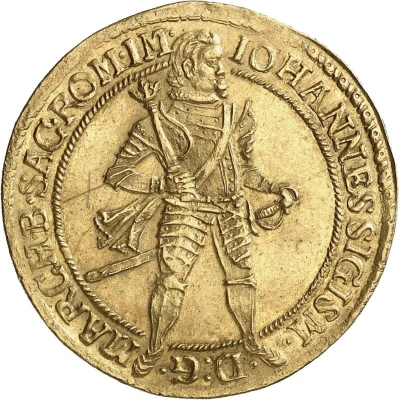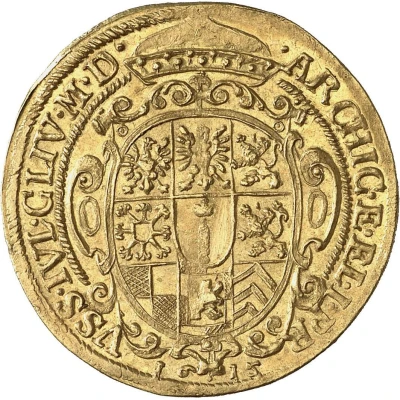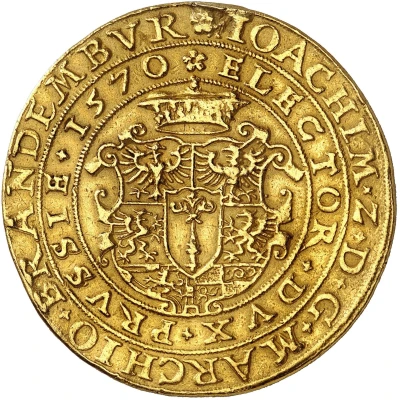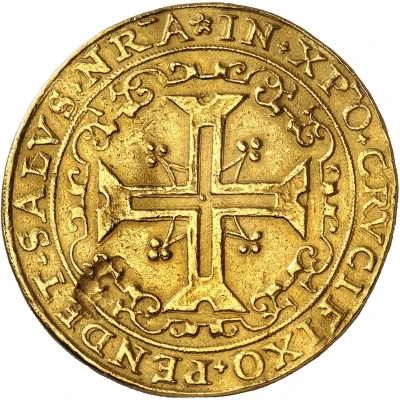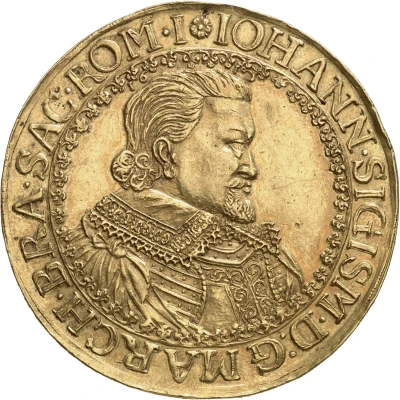
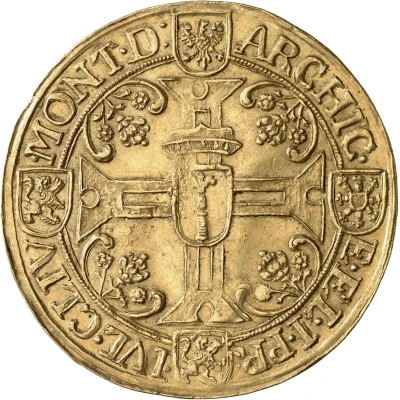

© Münzkabinett - Staatliche Museen zu Berlin (CC BY-SA 4.0)
5 Ducats - John III Sigismund
| Gold (.986) | 17.5 g | 42 mm |
| Issuer | Margraviate of Brandenburg (German States) |
|---|---|
| Prince elector | John III Sigismund (1608-1619) |
| Type | Standard circulation coin |
| Years | 1613-1614 (1611-1614) |
| Value | 5 Ducats (35⁄2) |
| Currency | Thaler (1440-1618) |
| Composition | Gold (.986) |
| Weight | 17.5 g |
| Diameter | 42 mm |
| Shape | Round |
| Demonetized | Yes |
| Updated | 2024-10-04 |
| Numista | N#413596 |
|---|---|
| Rarity index | 100% |
Reverse
Cross, arms in center, shield at end of each arm.
Script: Latin
Lettering: ARCHIC E EL I PR IVL CLIV MONT D
Interesting fact
One interesting fact about the 5 Ducats - John III Sigismund 1613-1614 (1611-1614) coin from Margraviate of Brandenburg (German States) is that it was minted during a time of great economic and political change in Europe. The coin was issued during the reign of John III Sigismund, who was the Margrave of Brandenburg from 1611 to 1614. During his reign, the Margraviate of Brandenburg was facing significant economic challenges, including inflation and debasement of the currency. Despite these challenges, the 5 Ducats coin was minted with a high gold content of .986, indicating the value and wealth of the Margraviate at that time. Additionally, the coin's design features the image of John III Sigismund, which highlights the importance of the ruling family during this period. Overall, this coin is a unique piece of history that provides insight into the economic and political climate of early 17th-century Europe.
